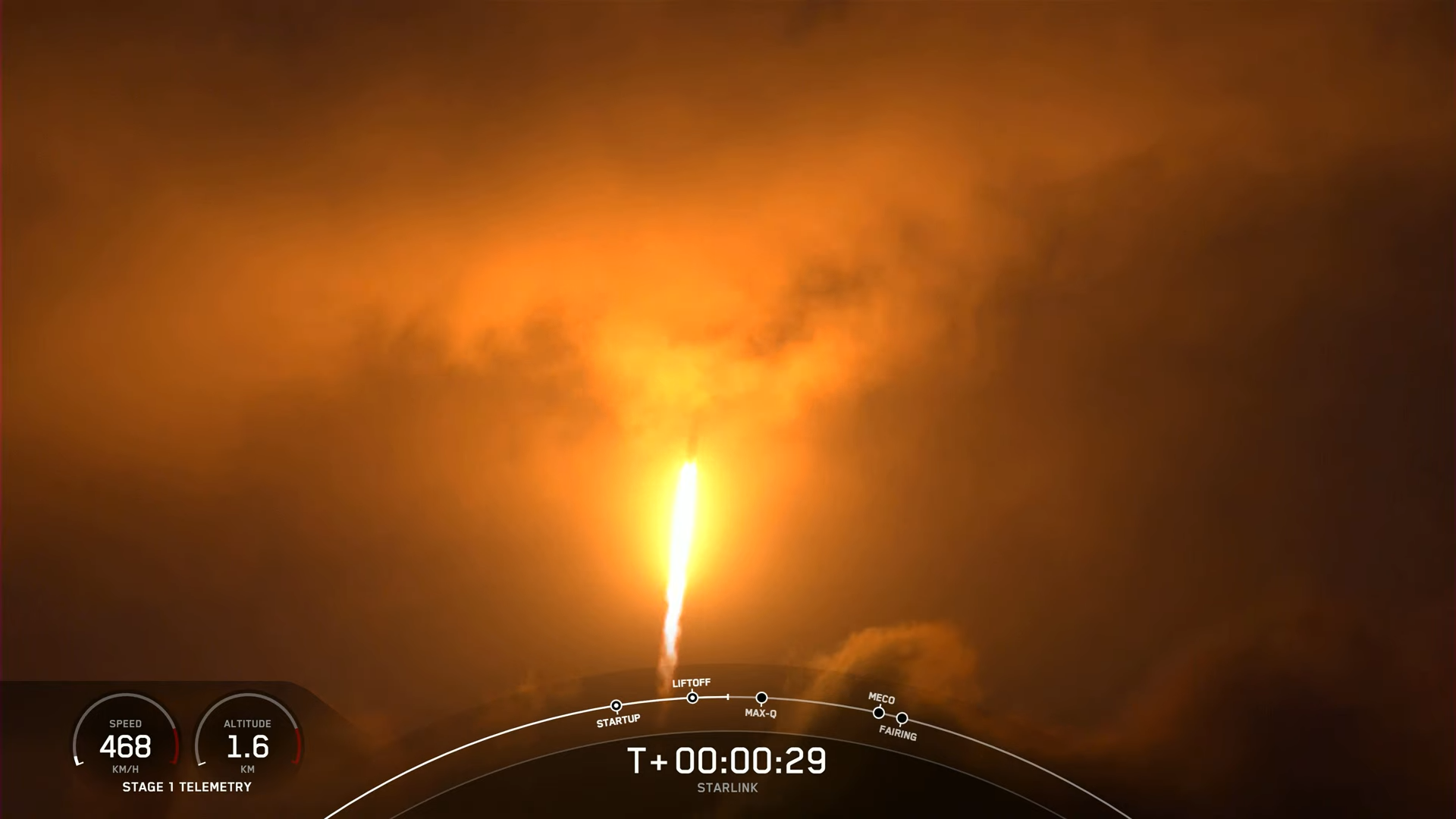
Barely an hour after United Launch Alliance (ULA) successfully flew its final Delta IV Heavy out of Vandenberg Space Force Base, Calif., on Saturday afternoon, attention returned to the Space Coast and storied Space Launch Complex (SLC)-40 at Cape Canaveral Space Force Station, for SpaceX’s fourth Falcon 9 mission of the month. The veteran B1073 core—which also became the 15th booster in under three years to fly for a fourth time—roared aloft at 7:32 p.m. EDT, laden with 52 Starlink low-orbiting internet communications satellites.
This particular booster is one of only two brand-new vehicles to have been introduced into SpaceX’s fleet in 2022. It follows hard on the heels of “Vandenberg Falcon” B1071, which logged four missions between February and July, delivering a pair of highly secretive payloads for the National Reconnaissance Office, plus a “stack” of 46 Starlinks bound for a 97.6-degree orbit and Germany’s SARah-1 radar-imaging surveillance satellite.
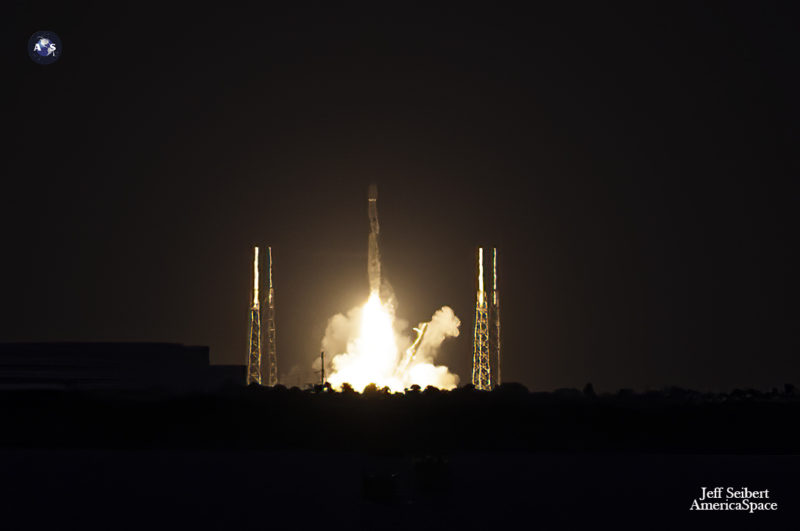
For her part, B1073 came online back in May, when she lifted 53 Starlinks—with a mass totaling over 35,800 pounds (16,250 kilograms)—out of SLC-40. In so doing, she became the first Falcon 9 to fly a Starlink payload on her maiden mission; the 47 prior Starlink flights, going right back to May 2019, had all ridden flight-proven boosters.
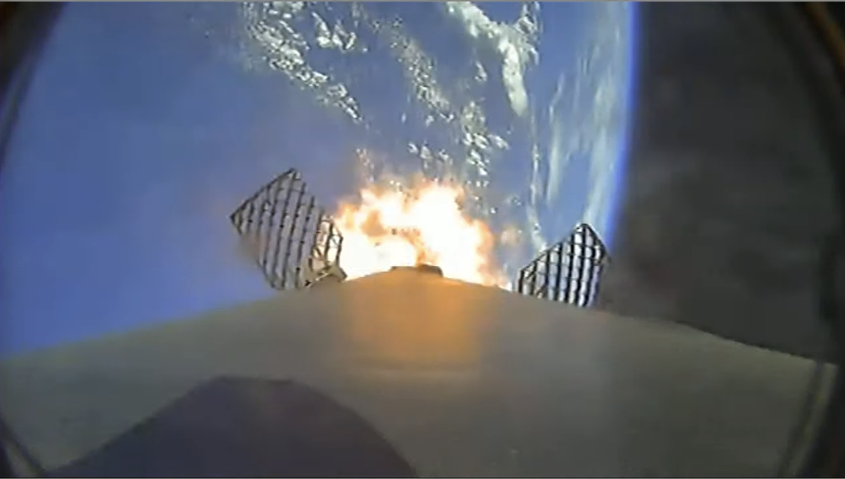
Returning from her initial outing to alight on the deck of the Autonomous Spaceport Drone Ship (ASDS), “Just Read the Instructions”, offshore in the Atlantic Ocean, B1073 was put directly back into service at the end of June to deliver the heavyweight SES-22 geostationary communications satellite on behalf of Luxembourg-headquartered SES. Again, she returned safely, this time touching down on the second East Coast-based drone ship, “A Shortfall of Gravitas”.
And just last month, on the evening of 9 August, she flew again, this time from historic Pad 39A at Florida’s Kennedy Space Center (KSC), laden with 52 additional Starlinks. Included in this payload was the 3,000th “production-design” Starlink to be placed into orbit in a little over three years. A second landing on ASOG followed.
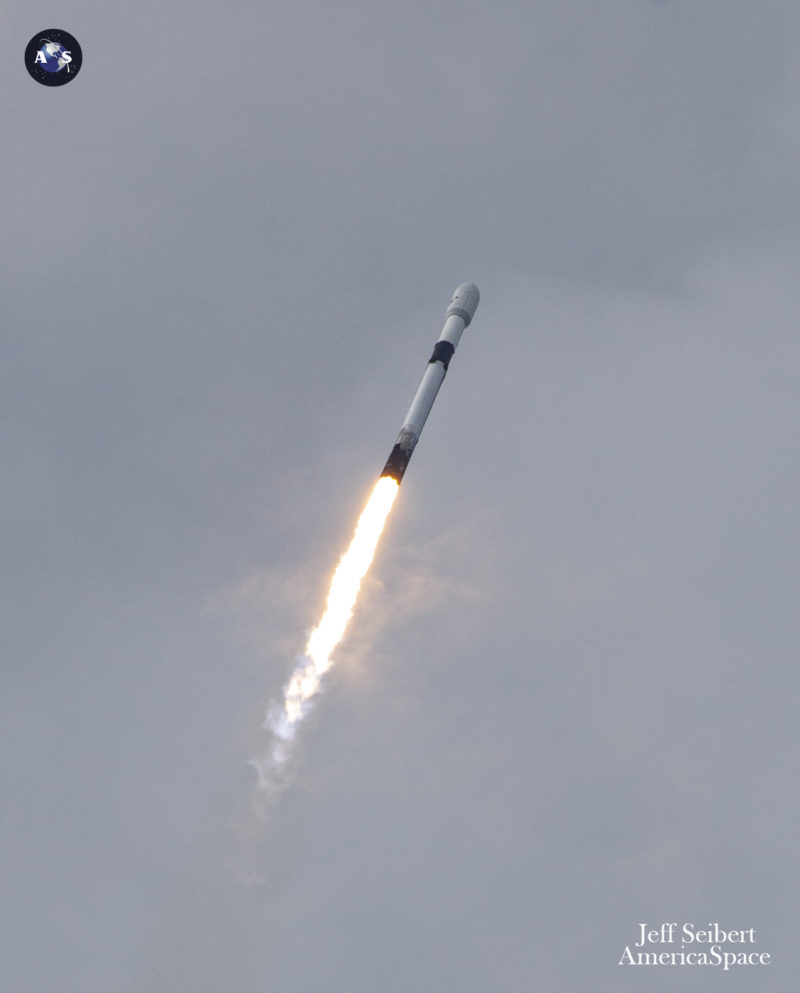
Preparations for Saturday night’s launch got underway last Tuesday, when ASOG again put to sea from Port Canaveral, bound for the recovery zone about 400 miles (640 kilometers) downrange in the Atlantic Ocean. However, a cautionary note was cast by the steady evolution and advance of Tropical Storm Ian, first tracked by the National Hurricane Center (NHC) on 19 September as a tropical wave to the east of the Windward Islands.
By Saturday morning, Ian sat to the south-southeast of Jamaica’s capital, Kingston, with maximum sustained winds of 45 mph (75 km/h), gusting at up to 60 mph (95 km/h). It is expected to become a hurricane in the next couple of days, achieving landfall in Cuba on Monday and strengthening to a major hurricane by Tuesday.
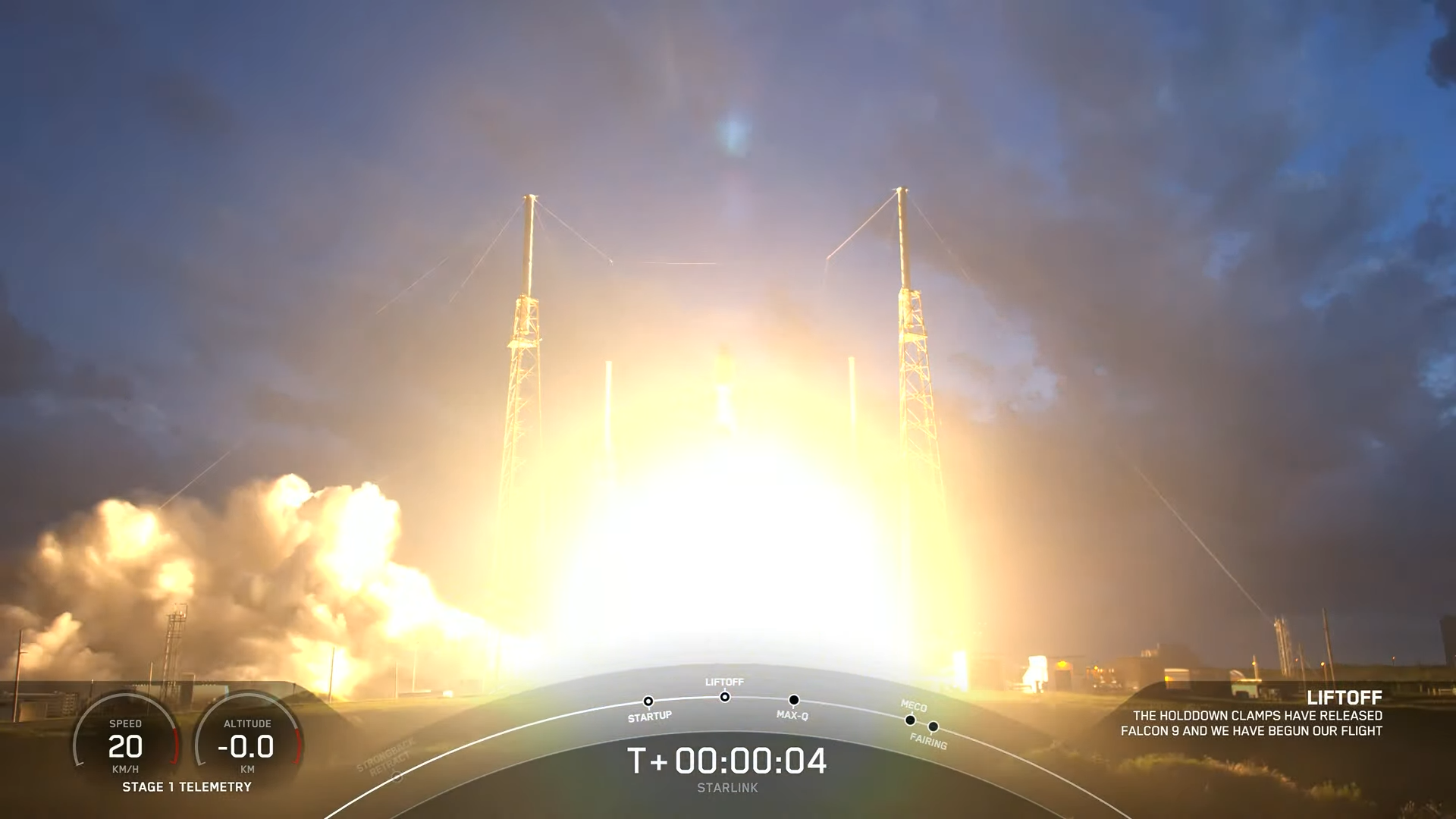
Ian should reach Florida by the middle of next week. And this may potentially hamper ASOG’s efforts to safely return B1073 back to Port Canaveral.
Despite the steady approach of Ian, conditions along the Space Coast on Saturday evening were predicted to be 80-percent-favorable, diminishing slightly to 70 percent in the event of a 24-hour scrub and recycle to Sunday. Potential violation of the Cumulus Cloud Rule and Liftoff Winds Rule are the main factors of concern.
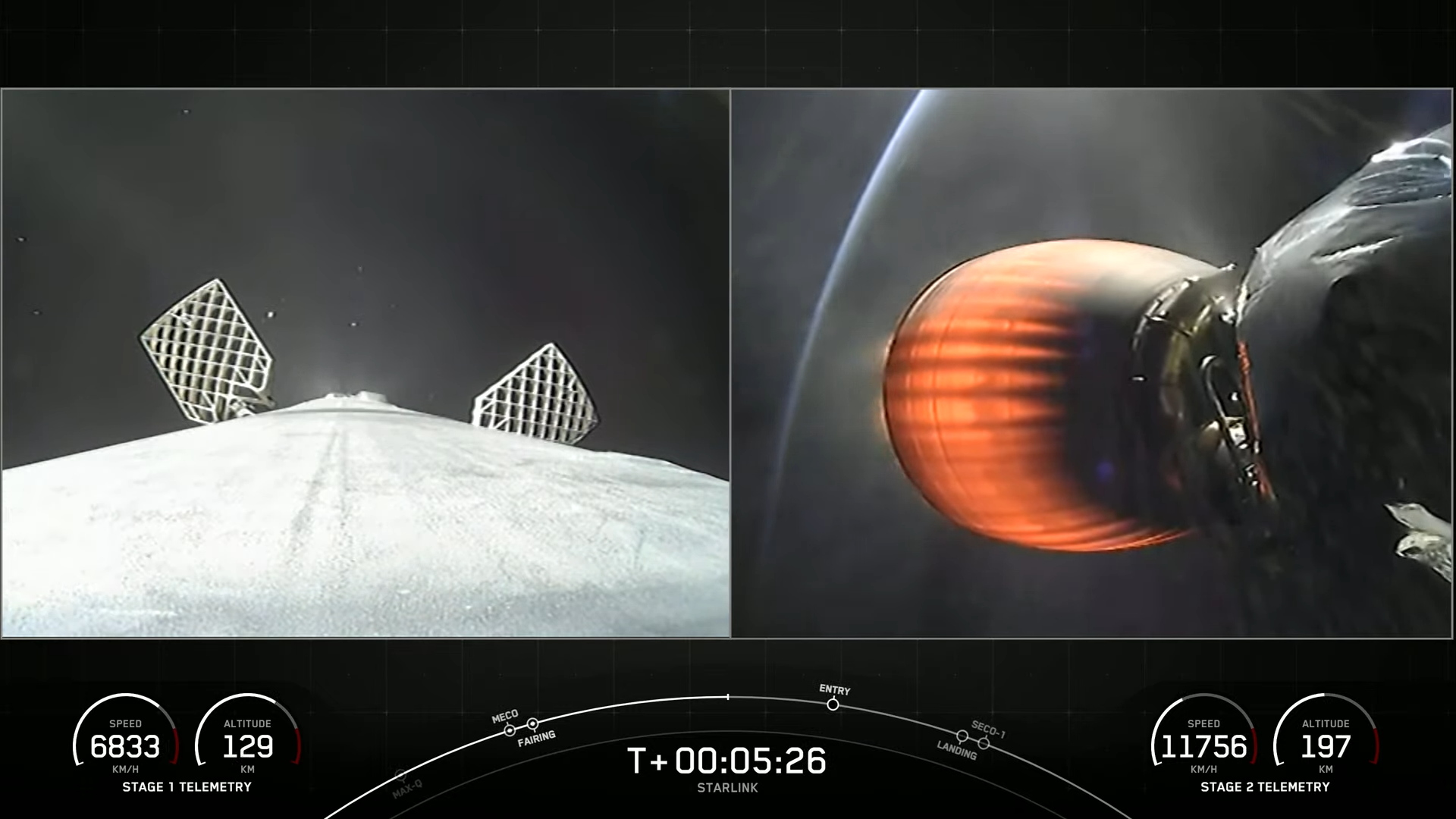
Hurricane Fiona, which battered Puerto Rico, the Dominican Republic and Grand Turk Island in recent days, is heading north and currently resides to the west of Newfoundland and Labrador. “As Hurricane Fiona races northwards, a trailing band of convergence has developed from it and in front of a high-pressure system moving into the Eastern U.S.,” noted the 45th Weather Squadron at Patrick Space Force Base in a Saturday morning update.
“This frontal band will push through the Space Coast today, producing some isolated showers and bringing gusty northeasterly winds,” it added. “The band should stay south of the Spaceport Saturday as high pressure builds in, allowing winds to diminish.”
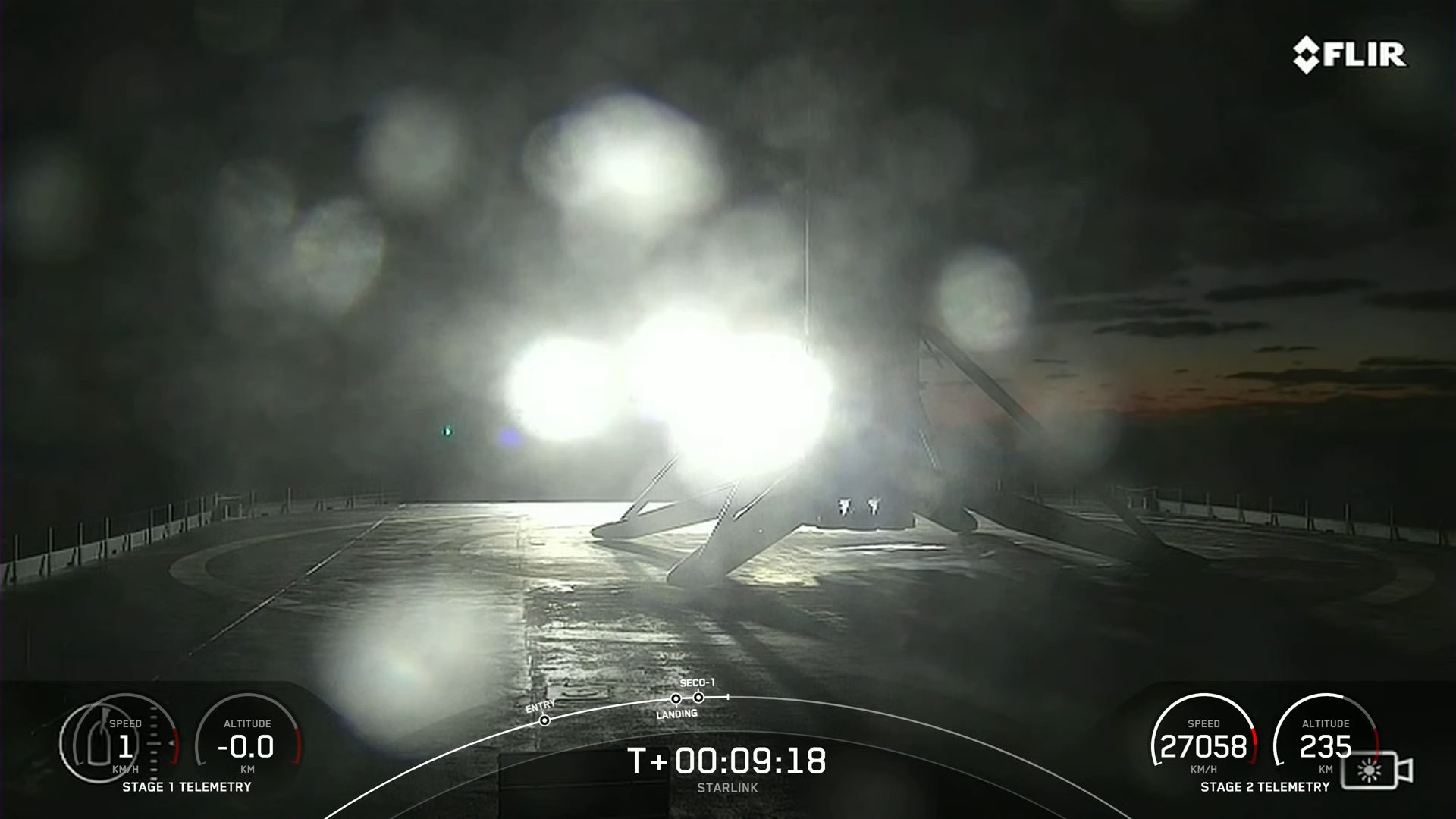
Liftoff at 7:32 p.m. EDT was entirely nominal, as the 230-foot-tall (70-meter) Falcon 9 speared uphill on the cusp of sunset. It was SpaceX’s 43rd launch of the year, its fourth mission of September and the third consecutive month in 2022 to feature at least four Starlink flights. All told, almost 1,500 Starlinks have been launched since January.
B1073 separated from the stack at 2.5 minutes into ascent and commenced a smooth descent toward its fourth drone ship landing and its third touchdown on ASOG. With the core stage gone, the Merlin 1D+ Vacuum engine of the Falcon 9’s second stage ignited for a standard six-minute “burn” to pre-position the Starlink stack for deployment at 15 minutes into tonight’s mission.





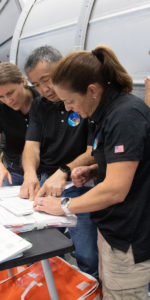
2 Comments
2 Pings & Trackbacks
Pingback:Record-Tying 14x-Flown Falcon 9 Lifts Galaxy 33/34 Twins to Space - AmericaSpace
Pingback:SpaceX Lofts Moon Lander, Rover, Ice-Seeker, Approaches 60-Launch Year - AmericaSpace